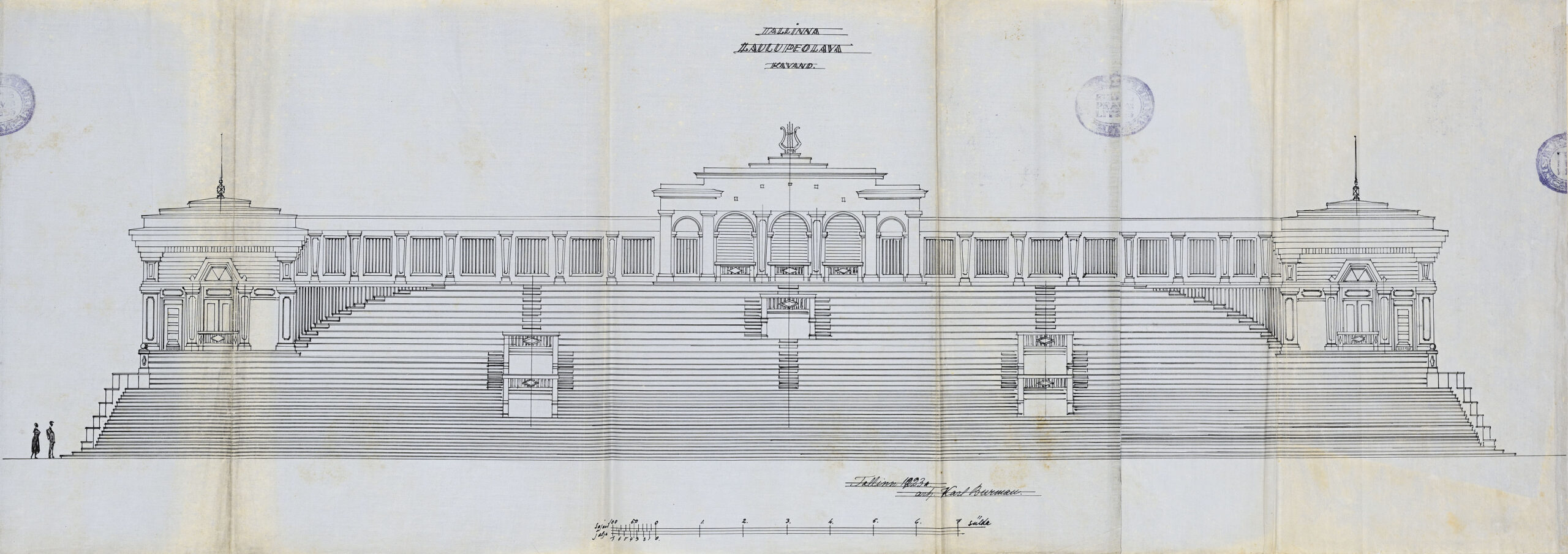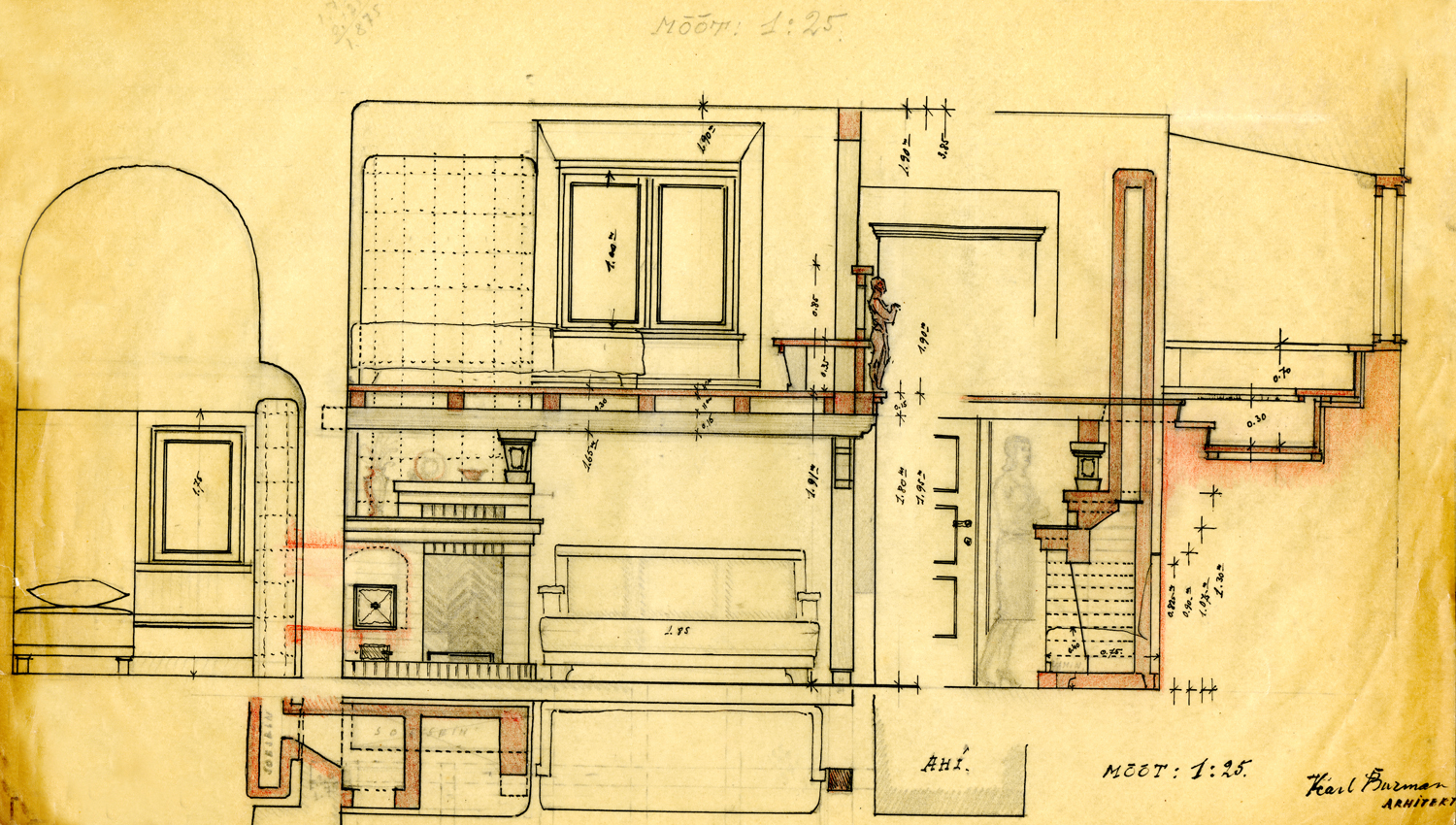Tag Archives: architect: Karl Burman
Tallinn Song Festival stage

Karl Burman, 1923. EAM 2.4.10
The VIII Estonian Song Festival was held in Tallinn in 1923. It was the first song festival of the independent Republic of Estonia. The festival site was located in Kadriorg (Roheline aas), where it was planned to build a stadium in the future. The song festival stage was designed by the architect Karl Burman. The project was approved in April 1923, and the stage was ready by the start of the festival on June 30. According to art historian Leo Gens, the imposing wooden building with a neoclassical look was one of the most outstanding works of the architect (see Leo Gens. Karl Burman. Monograafia. Tallinn, 1998). In 1926, the stadium was completed and the concert stage was adapted to the stadium grandstand. The building stood for the next 10 years, until a new reinforced concrete tribune designed by architect Elmar Lohk and engineer August Komendant (completed in 1938), one of the top buildings of Estonian modernist architecture and engineering, was built in its place (see Miracles in Concrete. Structural Engineer August Komendant. Compiled by Carl-Dag Lige. Tallinn, 2022). Tallinn Song Festival stage project was stored in the archive of the former National Construction Committee of the USSR, until it reached the collection of the newly created architecture museum in 1991. Text: Anne Lass
Veel: 1920s, architect: Karl Burman
Hanko’s house in Tartu County

Karl Burman senior, 1922. EAM 2.2.695
The drawing depicts a dwelling in a farm in Kambja owned by journalist and entrepreneur August Hanko. At the time, Karl Burman favoured National Romanticism and drew inspiration from traditional Estonian farm architecture, using poetic elements to mitigate its practical nature. Burman’s oeuvre includes repeated elements in the form of bay windows, porches and a high-hipped thatched roof. Small grid windows of different sizes and shapes are also common to his work. As is characteristic to the style, Burman avoided excess practicality in the arrangement of space, placing a spacious hall in the centre of the layout and the living quarters surrounding it. The project was never realised. Text: Sandra Mälk
Veel: 1920s, architect: Karl Burman
Reconstruction of the Neitsitorn tower into a studio apartment

Karl Burman, 1945–1947. MEA 3.2.34
Artist-architect Karl Burman lost his home in Kadriorg during the war and received new rooms in Neitsitorn (the Virgin’s Tower) in Old Town Tallinn, which had been an established gathering place for artists for a long time. The top floors of the tower housed a studio and living quarters. For 20 years the famous architect lived in a small one-room apartment within the thick walls of the medieval wall tower and planned to carry out reconstructions during his time there. In the sketches, Karl Burman has depicted the tower as a southern villa with spacious balconies and skylights, he also covered the façades with lush climbing plants. Every corner has been put into use – benches and built-in cupboards designed for the niches. The tower was restored and reconstructed as a cafeteria in 1968–1980. The drawings came to the museum via architect Teddy Böckler in 1994. Text: Sandra Mälk
Veel: 1940s, architect: Karl Burman, interior, reconstruction





